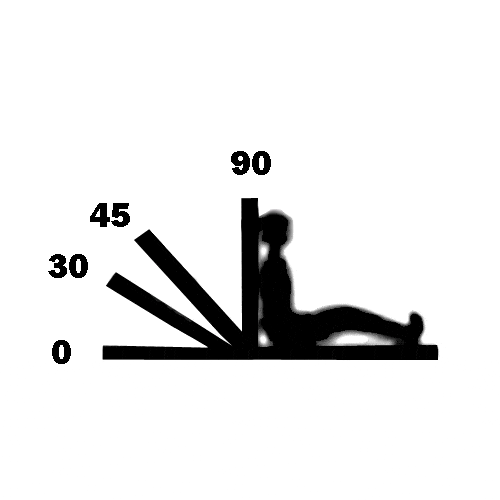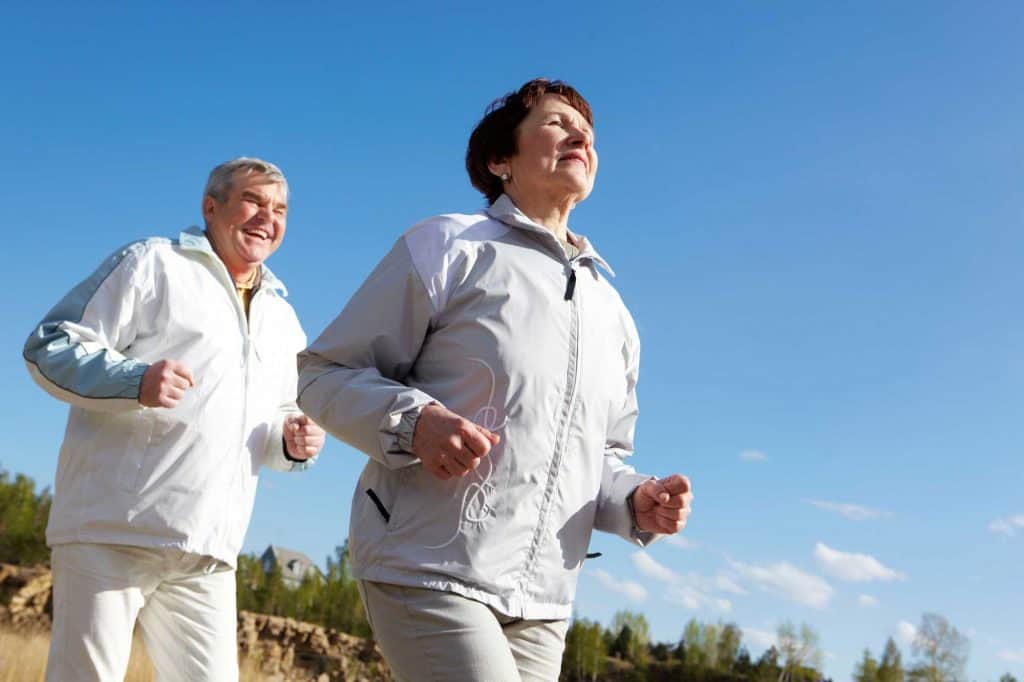A person with chronic obstructive pulmonary disease – COPD – will find it hard to sleep at night due to incessant breathing problems. One solution doctors can give is to let the individual sleep in a semi-fowler position.
What is COPD?
COPD is a condition where the lungs suffer from inflammation and cause obstructed airflow. A person who has COPD may experience symptoms such as wheezing, hard and dry coughing, and difficulty in breathing.
Causes of COPD
Causes of COPD are mostly lifestyle choices and environmental factors. Smoking is the number one factor leading to COPD, followed by exposure to dangerous fumes and poor household ventilation.
People with COPD are at risk of developing lung cancer and heart diseases.
There are two main conditions that have a reciprocal relationship to COPD – chronic bronchitis and emphysema. Chronic bronchitis is an infection of the bronchial tube lining, the body part responsible for carrying air into and out of the lungs’ air sacs (alveoli). It is distinguished by a daily production of cough and mucus (sputum).
Meanwhile, emphysema is a condition involving damage to the lungs as a result of harmful exposure to smoke, fumes, and harmful particles.

Symptoms of COPD
Symptoms of COPD often do not appear after there’s damage to the lungs – especially when it has worsened over time, due to harmful exposure to substances. Common signs and symptoms include:
Shortness of breath
COPD can cause shortness of breath to a person, not only when he or she is exerting effort during physical activities, but at times when resting.
Wheezing
Wheezing is caused by inflammation (often due to COPD) or narrowed airways. A person who wheezes produced a high-pitched whistling sound when inhaling or exhaling.
Tight chest
Tight chest is a squeezing or burning chest pain that lasts for several minutes. While it’s a continual pain in your chest, it’s a pain that travels in other parts of the body.
Excess mucus
Excess mucus in the lungs makes it hard to breathe as it causes congestion and coughing. It is one symptom of bronchitis where the lungs expand and widen, leading to excess mucus and infection vulnerability.
Cyanosis
Cyanosis is the condition where your lips and fingernail beds appear bluish due to the lack of oxygen. According to research, cyanosis is evident when oxygen saturation occurs 85% or less.
Respiratory infections
Frequent respiratory infections may occur due to low immunity. A person suffering from COPD is at risk for other infections such as pneumonia, bronchitis, asthma, or lung cancer.

Fowler’s Position
Fowler’s position is a medical method to ease those who have difficulty in breathing. Patients are usually seated in a semi-sitting position (45 to 60 degree-angles) with tucked, bent, or straight knees. The position was recorded by George Ryerson Fowler, an American surgeon.
A High-Fowler suggests of an upright position of 90 degrees. Meanwhile, a standard Fowler implies an angle between 45 and 60 degrees, while a Semi-Fowler position showed a 30 to 45-degree angle. Low-Fowler indicates a moderate inclination of the head at 15 to 30 degrees.
What the position is for?
The posture acts as an alternative to treat respiratory distress by expanding the lungs to promote breathing. This position is suited to instill relaxation of abdominal muscle tension, which paves the way for easier breathing.
What’s more, it alleviates compression of the chest due to gravity. The Semi-fowler position promotes comfort during eating and is practiced in postpartum women for efficient uterine drainage.
Semi-Fowler Position: How can it curb COPD?
The Semi-Fowler position allows the individual to lie in bed at a 30 to 40-degree angle. It’s one of the most applicable postures for people suffering from heart, respiratory, or neurological problems. It is also deemed the most relaxed position for patients using a nasogastric tube, as it holds the tube fixed in place.
Moreover, the Semi-Fowler position is also used to provide relief to shoulder, cranial, nasal, abdominal, and breast pain and post-surgery care. A person lying in a Semi-Fowler Position experience reduced symptoms of nausea compared to someone lying in the supine position.
COPD, as a lung disease, is caused by a blockage in the airflow due to unhealthy lifestyle and environmental factors. The blockage is defined by shortness of breath which can disrupt sleep quality.
However, one method to curb the pain and breathing problem is to let the person lying in a semi-fowler position by effectively lowering shortness of breath when sleeping or lying down.

Tips for Breathing Easier with COPD
Over 10,300 Australians now suffer from progressive lung disease, COPD or Chronic Obstructive Pulmonary Disease. Though smoking is the primary cause, COPD can also be hereditary or develop when the lungs are exposed to heavy amounts of chemicals, dust, or pollution. While there is no cure for COPD, listed below are some tips that can help you to live better and breathe a little easier with COPD.
Keep Indoor Air Clean
When coping with COPD, it is essential to keep the air in your home as clean as possible. One simple way to do this is by replacing your regular air filter with a HEPA filter. HEPA filters are high-efficiency air filters that can trap up to 99% of pollutants keeping the air much cleaner than using a standard filter.
Maintain a Healthy Lifestyle
Being obese places unneeded stress on the body and causes breathing to become more labored. Since the ultimate goal for COPD patients is to maintain a normal breathing rate, staying in good physical shape is crucial. Eating a healthy, balanced diet of fresh fruits, vegetables, and lean meat is one way to do this along with getting plenty of exercise.
In fact, some forms of aerobic exercise can help to strengthen the lungs. Of course, you will always want to check with your physician before making any changes to your diet or exercise regimen.
Stop Stressing
Stress can play havoc on your system and can make your COPD symptoms worse. That is why eating right, exercising and learning to de-stress is of ultimate importance. Getting a good night’s sleep, practicing yoga or meditation, socializing with friends, and learning to say ‘no,’ when you are getting overloaded are also all good ways to help keep stress at bay.
Stop Smoking
If you are a smoker and have COPD, the best thing you can do is to quit. Smoking not only causes coughing, wheezing and shortness of breath, but it also damages air sacs in the lungs and irritates airways. Even e-cigs are hard on COPD suffers because the ingredients are inhaled.
FDA has also never approved e-cigs, and the liquid nicotine contained in them has been known to increase the risk of death. If you want to quit smoking, there are prescription medications and cessation aids available on the market that can help. There are also many great support groups for people trying to quit. Check with your insurance company or the local health department for more details.
Stay Away From Germs
Since COPD is already so taxing on both the lungs and body, it is vitally important to stay away from others who are ill. The last thing you want is to have another illness on top of COPD. One way to do this is by avoiding large crowds, washing your hands thoroughly and often, and keeping vaccinations (including flu and pneumonia vaccinations) up-to-date.
Get Help
If you have not already talked to your doctor about treatment, you should know that there are several resources available to help ease the symptoms of COPD. There are short, and long-acting bronchodilators that can be used to open or relax the airways and inhibitors can be taken daily to prevent COPD exacerbations.
A pulmonary rehab is also a great option for those suffering from COPD. It is usually offered as outpatient therapy, teaching you skills for how to conserve energy, deal with psychological aspects of the disease, and breathing techniques.
COPD causes partial blockages in the lung’s airways making breathing more difficult and ordinary tasks challenging. Though there is no cure for COPD, making a few minor lifestyle changes can make a significant impact on the disease and in turn can lead to living a more productive, longer, and higher quality of life.
Design your evening routine for better sleep
Sleeping well on a regular basis is an easy way to improve your health and well-being. Prop yourself up in a semi-fowler position can be really good for you. Those who have good sleep have improved performance at work and in athletic activities and decreased susceptibility to disease. Most important of all, people who sleep well at night simply feel better.
It is intuitive that we need to wind down after a busy day before going to sleep. From CEOs to astronauts, a solid nighttime routine is a precursor to a good night’s sleep. These routines set the foundation for high-quality sleep, which in turn gives you the energy you need to perform optimally during daytime hours.
Structuring your evening routine using these tips can help relax your body and mind for a night of better sleep and a better life in the process.
Watch your food and fluid intake
What you eat and drink during the evening has a strong impact on your sleep during the night. It is generally not recommended to eat a heavy meal before sleeping. Eating too much may cause discomfort while at rest. If you feel the need, having a small snack may prevent hunger before the morning.
Do not eat or drink anything that contains caffeine within six hours of your intended bedtime. If you don’t usually drink coffee or tea, then you should avoid drinking these at all during the afternoon or in the evening.
For uninterrupted sleep, it is best to avoid drinking any fluids within two or three hours of bedtime. A full bladder can cause nighttime wakefulness. This may prevent you from reaching the deepest stage of sleep.
Some people drink alcohol to help them sleep. Red wine, in particular, is known to cause a feeling of tiredness. Alcohol may make it seem easier to fall asleep for some people. Unfortunately, drinking alcohol also makes it difficult to stay asleep

Exercise: how much is too much?
Research suggests that getting exercise during the day results in better sleep at nighttime. For an optimal sleep schedule, try to have at least 30 minutes of physical activity each day.
Exercise too close to bedtime can impair the ability to fall asleep. For this reason, strenuous exercise within three hours of sleep is not recommended.
If you wish to incorporate exercise into your routine before bed, try less strenuous activities such as hatha yoga or gentle swimming. Beyond calming the body, these activities help to calm the mind through repetitive motion and breathing.
Self-Care activities
One of the major causes of insomnia is difficulty allowing the mind to relax.
Meditation may be the single most effective way of quieting the mind and winding down before sleep. There are hundreds of guided meditation exercises and videos available online. These may guide you in a meditation practice.
You can try meditating while lying in bed before you go to sleep. With the lights off, try taking slow, deep breaths. Pay attention to the depth and quality of your breaths, the sensations you are feeling, and the thoughts that come through your mind. Try to gently redirect attention to the pattern of your breathing.
Some prefer other methods of mental decompression. You may try writing in a nightly journal. Even five minutes of scribbling down your thoughts can do wonders for your state of mind and help you to ‘let go’ of the day.
A hot bath, a long shower, and a walk in the park are other common activities of self-care. Any of these can help you to care for yourself before settling in for a solid sleep.
By optimizing your diet, exercise, and self-care activities during the evening, you will have the best possible chance of achieving a good night’s rest.



